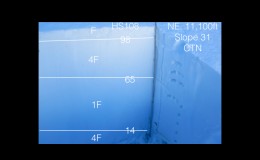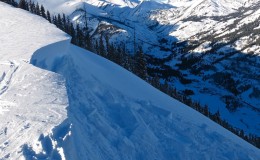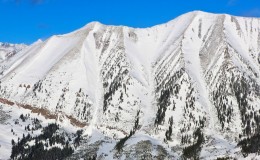Zach Guy
Forecaster, CBAC
By now, you’ve probably noticed the CBAC has had a bit of a make-over. We have spent over a year designing, researching, redesigning, and coding our new website, which we launched this week. We were operating on an old dinosaur of a web platform and it was time for a new site that matched the current state of the e-world. This new site has improved graphics, higher resolution imagery, more user friendly from our end and yours, an improved observations platform, a format that is more consistent with avalanche centers nation-wide, and some additional forecasting tools which you can use to make safer decisions in the backcountry. Bear with us as we work through the kinks and strive to improve the functionality of the site.

Now let’s jump into a key element of our daily forecasts: the avalanche problem. The reason we put a lot of focus on avalanche problems is because the flavor of the avalanches we expect to encounter can be more influential in our terrain and risk management than a given danger rating. For example, not all Moderat danger ratings are created equal. I move through terrain and make snowpack assessments very differently for a Moderate danger when the only concern is wind slabs, versus a moderate danger involving deep persistent slabs. The Utah Avalanche Center just published a new tutorial on avalanche problems; its worth a look. http://utahavalanchecenter.org/avalanche-problems-tutorial. The CAIC also defines each problem here
This idea of avalanche problems is nothing new to our CBAC users, but we’re presenting it in a slightly different way. The four key elements to the avalanche problem is the avalanche character, its distribution, its likelihood, and its size. Here’s an example of how we present the problem. You can always click on the little blue “information” icons for more help or info.

The trickiest part of this is the distribution rose: where the problem is located across our terrain. Imagine a conical shaped peak, and you are hovering above it in your private helicopter. The inner-most rung is the highest elevation: above treeline, and the outer-most rung is the base of the cone below treeline. Each triangular octet represents a compass direction, so imagine this conical peak is oriented the same way it would look on a map. Now here’s the important part. We shade the areas where the problem is most likely. The problem distribution is never as black and white as it appears on this rose. This gives you general guidance on where you are most likely to encounter the problem at the regional level, but it is still up to you to make assessments on individual slopes. Here’s an example: We get a mild snow event with strong westerly winds. Our advisory will probably shade the distribution of fresh wind slabs on leeward aspects (NE, E, SE) near and above treeline because windslabs will be fairly widespread on those slopes. Given such an event, I can almost always find wind slabs on windward aspects (due West) too, if I seek out cross-loaded features or gullies. There might be a few slopes below treeline that develop wind slabs as well. So just because the wind slabs are prevalent on higher elevation, leeward aspects, it doesn’t mean you shut off your snow senses if you’re traveling elsewhere. We will try to describe these nuances and subtleties in our text, so its in your best interest to read the whole advisory and not just look at the pretty pictures.
The likelihood is fairly self explanatory. This is the chance of triggering a slide if you are recreating in steep, avalanche terrain in the parts of the rose that we have shaded, where the problem is most prevalent. Lastly, we describe the expected size. Small avalanches are D1’s: relatively harmless to people unless they push you into a terrain trap. Large avalanches are D2’s: they could bury, injure or kill a person. Very large avalanches are D3’s: these could bury cars, destroy a house, or break trees. Historic avalanches are nearing the maximum size a slope can produce. These don’t happen every year.
We’d like to acknowledge Brandon Clifford, our website designer, and the CAIC for contributing resources and forecasting elements. We hope you find our new website useful in planning and making safe decisions in the backcountry.











